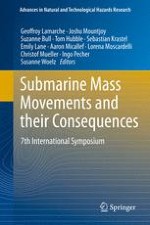This book is a comprehensive collection of state-of-the-art studies of seafloor slope instability and their societal implications. The volume captures the most recent and exciting scientific progress made in this research field.
As the world’s climate and energy needs change, the conditions under which slope instability occurs and needs to be considered, are also changing. The science and engineering of submarine – or more widely subaqueous – mass movements is greatly benefiting from advances in seafloor and sub-seafloor surveying technologies. Ultra-high-resolution seafloor mapping and 3D seismic reflection cubes are becoming commonly available datasets that are dramatically increasing our knowledge of the mechanisms and controls of subaqueous slope failure. Monitoring of slope deformation, repeat surveying and deep drilling, on the other hand, are emerging as important new techniques for understanding the temporal scales of slope instability. In essence, rapid advances in technology are being readily incorporated into scientific research and as a result, our understanding of submarine mass movements is increasing at a very fast rate. The volume also marks the beginning of the third IGCP project for the submarine mass movement research community, IGCP-640 S4SLIDE (Significance of Modern and Ancient Submarine Slope LandSLIDEs). The Submarine Mass Movements and Their Consequences symposium is the biannual meeting under the IGCP umbrella.
